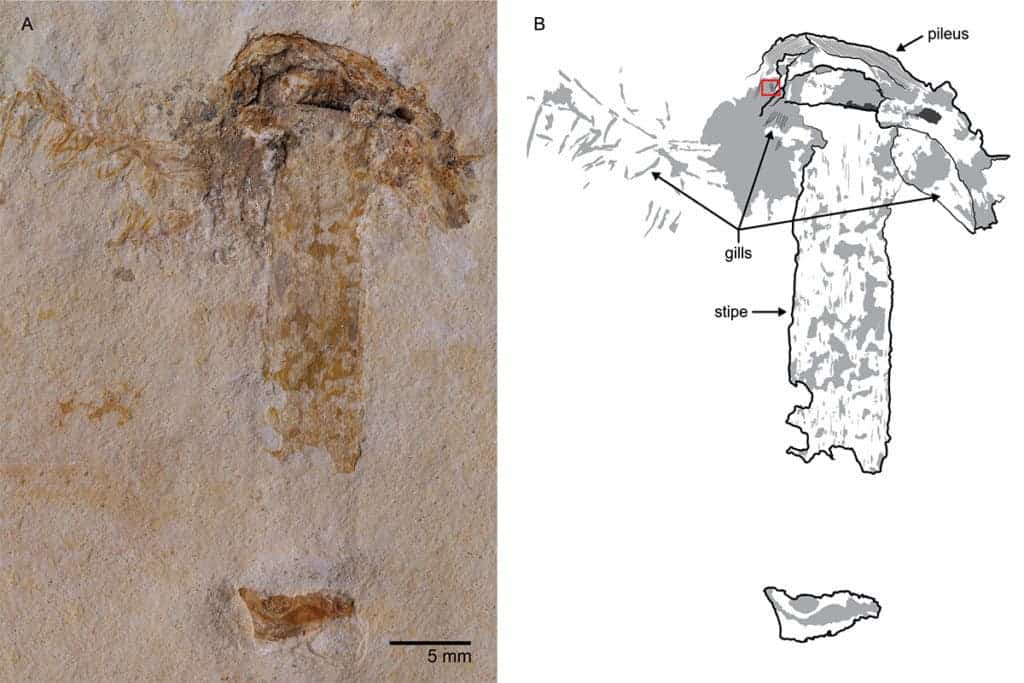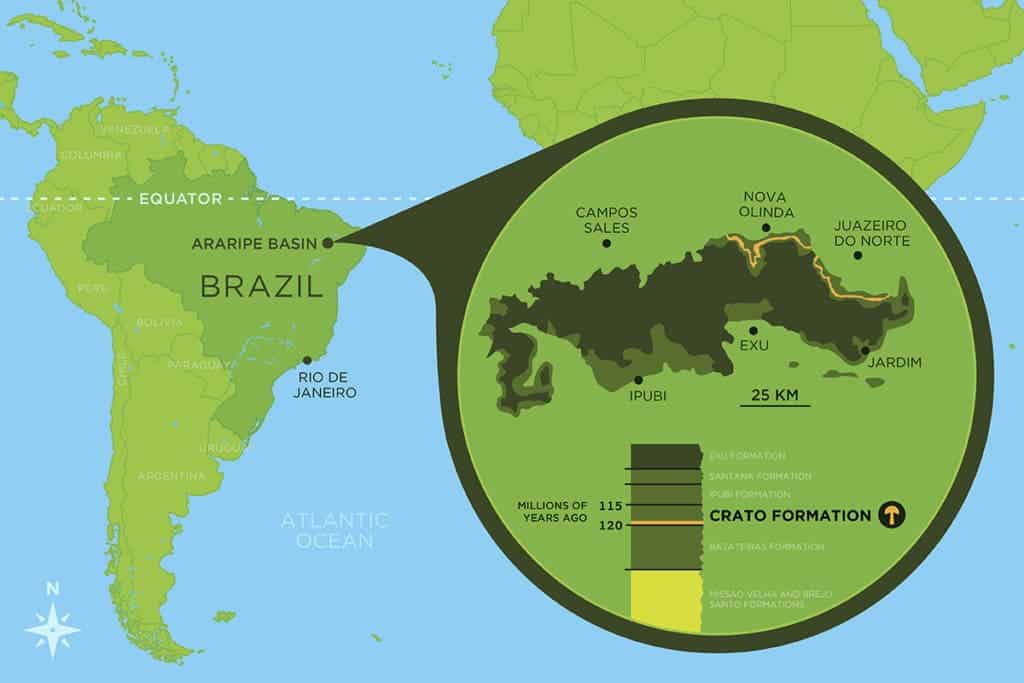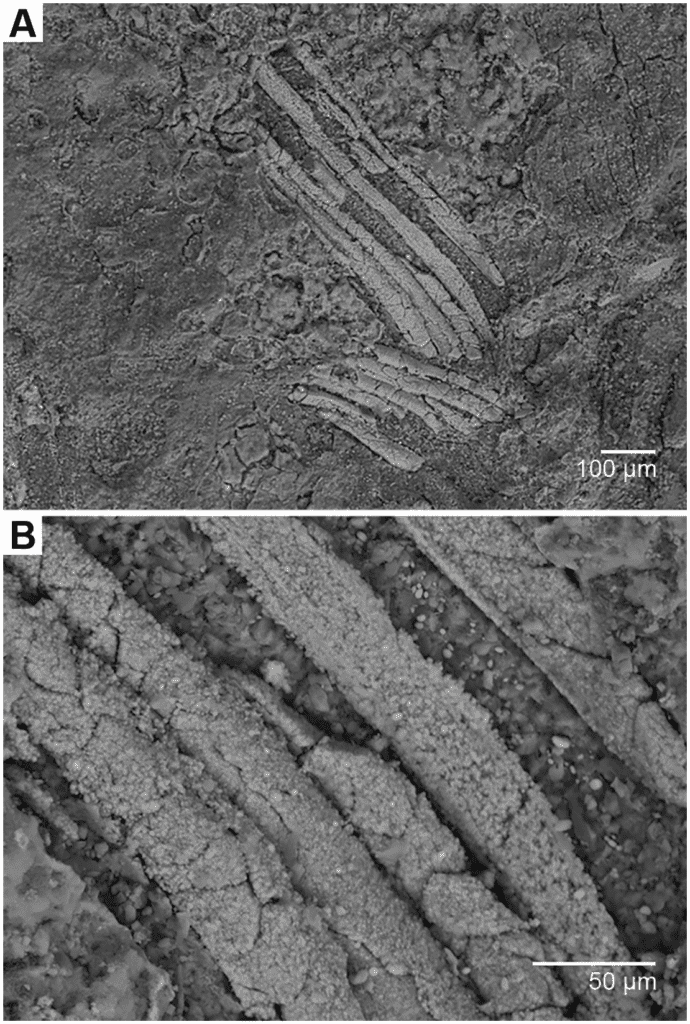It’s an extremely improbable finding, which took researchers by surprise.

Some 115 million years ago, this mushroom began an improbable journey: from a lagoon on the ancient supercontinent Gondwana, it fell into a river, traveled around for a bit, and then got stuck in sediment, becoming a mineralized fossil preserved in the limestone in northeast Brazil, before being ultimately discovered by paleontologists and identified by a University of Illinois researcher.
Fungi are ecologically diverse, geographically widespread, organisms, but their fossil record is quite scarce — for a pretty straightforward reason. In order for anything to become fossilized, very specific conditions need to be achieved. Fungi are also soft, don’t have any bones or hard parts, so the fossilizing conditions are even more specific and rare.
“Most mushrooms grow and are gone within a few days,” said Illinois Natural History Survey paleontologist Sam Heads, who discovered the mushroom when digitizing a collection of fossils from the Crato Formation of Brazil. “The fact that this mushroom was preserved at all is just astonishing. When you think about it, the chances of this thing being here – the hurdles it had to overcome to get from where it was growing into the lagoon, be mineralized and preserved for 115 million years – have to be minuscule,” he said.
Before this discovery, the oldest mushroom fossil had been preserved in amber and had been discovered by Illinois Natural History Survey (INHS) mycologist Andrew Miller, who is also a co-author of the new report. Miller says that finding mineralized fossils of mushrooms is even rare than finding them in amber. In fact, this is the first mushroom mineralized fossil ever found — and just ten had been found in total before. Before, the all unique amber inclusions ranging from mid-Cretaceous (90 million years) to Early Miocene in age (22 million years).
“They were enveloped by a sticky tree resin and preserved as the resin fossilized, forming amber,” Heads said. “This is a much more likely scenario for the preservation of a mushroom, since resin falling from a tree directly onto the forest floor could readily preserve specimens. This certainly seems to have been the case, given the mushroom fossil record to date.”

The mushroom itself was pretty small, measuring about 5 centimeters (2 inches) tall. Paleontologists have studied it using electron microscopy and found that it had gills under its cap, technically called lamella. Gills are used by mushrooms to disperse spores and can be used to identify species.
The team named it Gondwanagaricites magnificus, a combination of Gondwana, the ancient supercontinent, the Greek word agarikon, “a mushroom.” The “ites” suffix indicates a fossil. There’s still much we don’t know about the evolution of mushrooms, particularly because the fossil record is so scarce; so this significantly pushes the boundary of our knowledge.
“Fungi evolved before land plants and are responsible for the transition of plants from an aquatic to a terrestrial environment,” Miller said. “Associations formed between the fungal hyphae and plant roots. The fungi shuttled water and nutrients to the plants, which enabled land plants to adapt to a dry, nutrient-poor soil, and the plants fed sugars to the fungi through photosynthesis. This association still exists today.”







